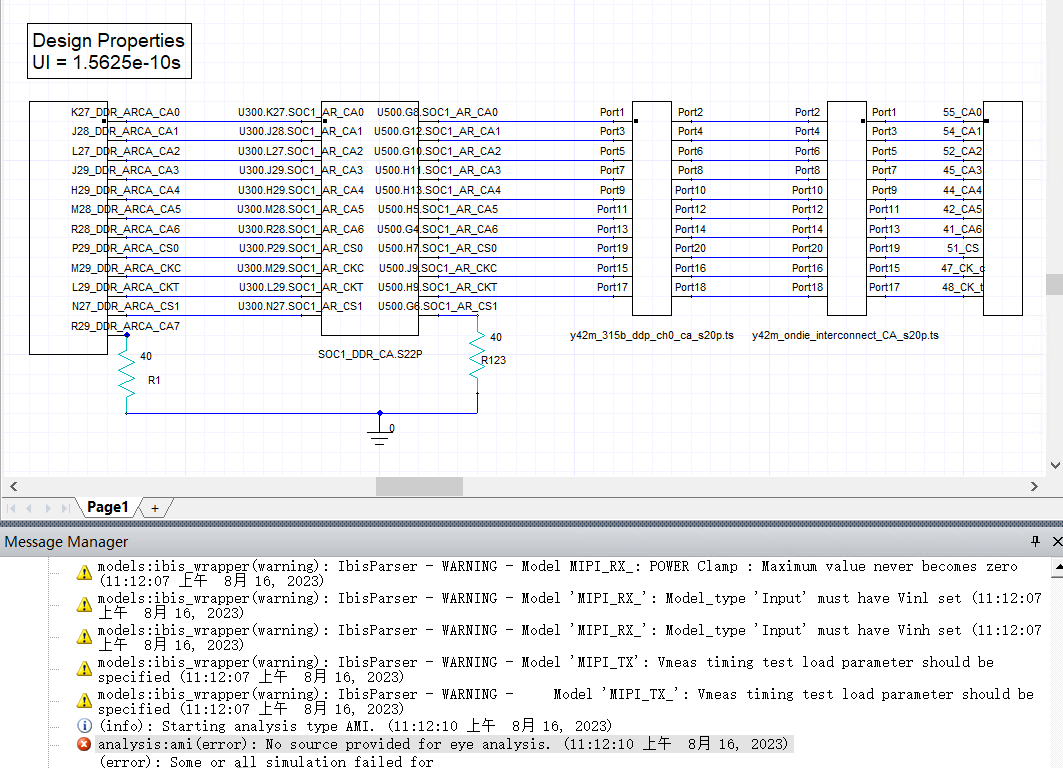-
-
August 16, 2023 at 3:36 am
-
August 17, 2023 at 10:47 am
Mrinmoy Bharadwaj
Ansys EmployeePlease ensure that you have set up the bit-stream to be transmitted from the Tx IBIS.
-
August 17, 2023 at 6:38 pm
Dan Dv
Ansys EmployeeTo check on one more thing related to that error. Do you have full IBIS-AMI Tx models or are they non-AMI traditional IBIS models.
Also, for AMI sims, I usually don't like to use the "import single component" as it makes it harded to do the pairing step required for AMI siulations with multiple Tx/Rx models. That is the electrically connected Tx/Rx pairs need to be flagged as such, but control clicking to highlight the matched Tx/Rx model and select "pair AMI Tx/Rx". With the single component import, we can't pair at a symbol level, so those associations have to be set in the component properties, and that is a bit messier.
-
August 18, 2023 at 6:24 am
wang jian
Subscriberthanks for answering my question!
I used the non-AMI traditional IBIS models.
Can single-ended signals be imitated by AMI?
-
-
August 18, 2023 at 12:33 pm
Dan Dv
Ansys EmployeeUnfortunately no,we don't allow non-AMI IBIS models to be used in an AMI simulation. You would have to get full IBIS-AMI Tx and Rx models if you want to do an AMI simulatoin. Or use traditional non-AMI IBIS models and perform a transient simulation.
-
August 19, 2023 at 2:44 am
wang jian
SubscriberIn the DDR IBIS model, only single-ended signals have AMI capabilities, such as DQ. Can AMI simulation be performed on single-ended signals? -
August 24, 2023 at 2:08 pm
Dan Dv
Ansys EmployeeYes, single ended IBIS-AMI models are supported, specifically for DDR5 simulations.
-
August 25, 2023 at 5:19 am
wang jian
SubscriberCan you explain how to do it?
-
August 25, 2023 at 6:45 pm
Dan Dv
Ansys EmployeeIn short, you have to import IBIS-AMI Tx and Rx models and place them on the schematic. At import time, there is a check box next to each singal pin that says if the underlying buffer has AMI properties or not.
Once imported and placed, you will need to set bit patterns for each net, choose the the appropriate drive strength and ODT values - which is usually achived by specifying different buffers within an IBIS model selector, and any other setups needed. Then you can add and run an AMI anlaysis.
I'll also say that if you are having trouble with any of this and are a full Ansys commercial customer, please open a new support case and we can provide more direct help than we can through the forum.
-
-
-
- The topic ‘errors of DDR EYEDiagram AMI analysis’ is closed to new replies.



-
4863
-
1587
-
1386
-
1242
-
1021

© 2026 Copyright ANSYS, Inc. All rights reserved.








